- Date
July 12 to October 2, 2022
- Tuesday to Friday
10 am - 6 pm
- Saturdays
9 am - 7 pm
- Sundays and holidays
9 am - 6 pm
- Fee
free
- For early booking (optional)
Visit the exhibition with the virtual tour 360º
What cannot be seen – Rhizomatiks
Art and technology meet at the upcoming Japan House São Paulo exhibition dubbed “What cannot be seen – Rhizomatiks”. With free admission, the unprecedented and interactive exhibition features work by one of Japan’s leading creative teams, internationally renowned for combining technology, database analysis, and visual expression.
On display from July 12 to October 2, the exhibition brings together three installations: Sensing Streams 2022 – invisible, inaudible (Ryuichi Sakamoto and Daito Manabe); optical walls (Youichi Sakamoto), and “Gold Rush” – Visualization + Sonification of OpenSea activity, in addition to the section Rhizomatiks Archive & Behind the Scenes, which brings a selection of devices the Japanese group created over its 15 years of activities.
Founded in 2006, the Rhizomatiks collective is dedicated to exploring new forms of technology and expression, presenting innovative work that revolves around research, development, and collaboration with other artists and researchers. The collective's technological performance at the closing of the Rio 2016 Olympic Games, in Rio de Janeiro, stood out for its combination of virtual reality and computer graphics.
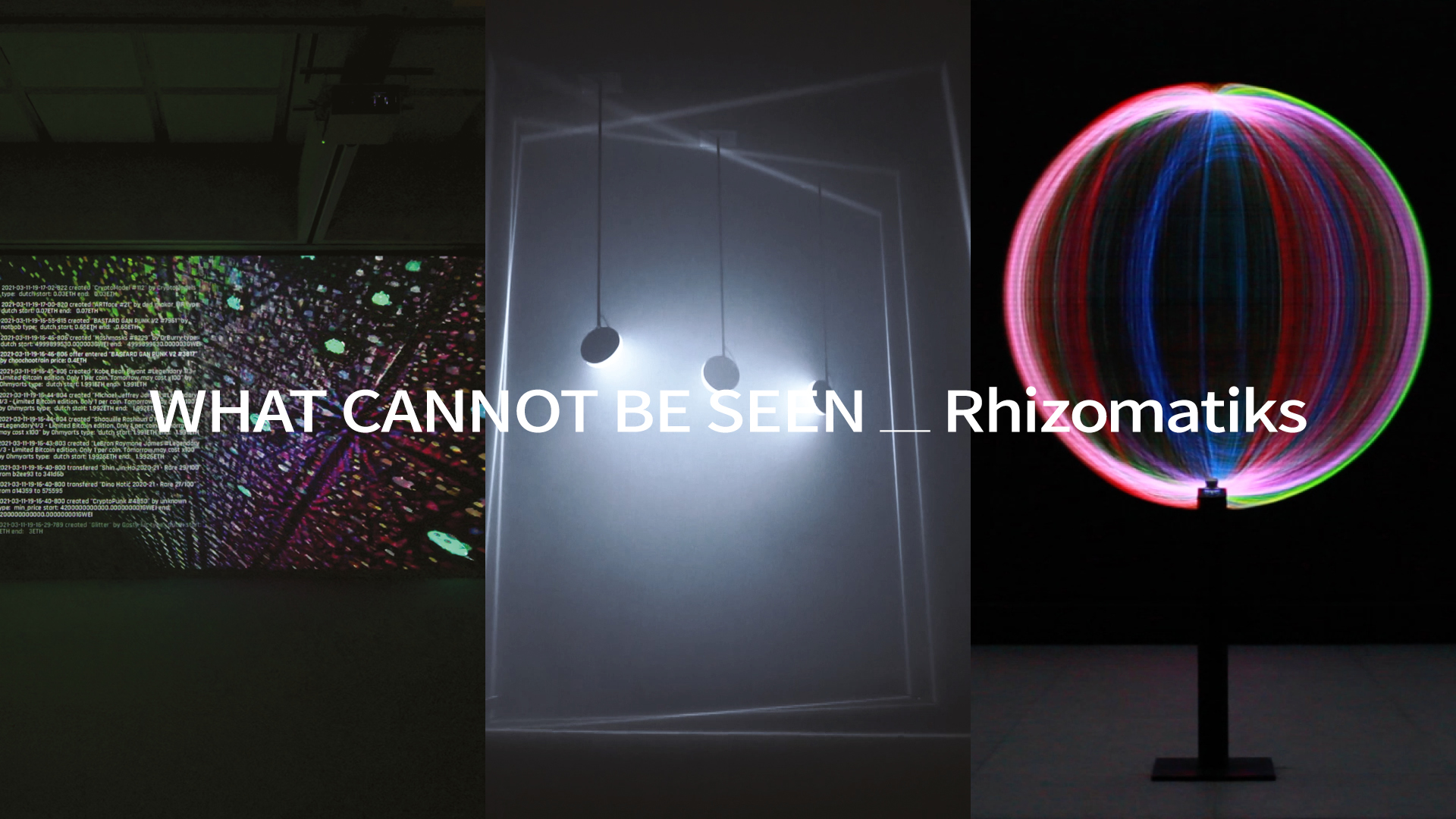
Interaction, immersion, and contemplation
When entering Japan House São Paulo's ground floor, visitors can have three distinct types of experiences: Interaction, immersion, and contemplation. Starting with the installation Sensing Streams 2022 - invisible, inaudible – developed by Daito Manabe, one of the founders of Rhizomatiks, in collaboration with the Japanese musician Ryuichi Sakamoto, composer of Oscar and BAFTA-winning soundtracks, such as Merry Christmas Mr. Lawrence (and who participated in the opening ceremony of Japan House São Paulo), the work detects electromagnetic waves through an antenna and makes the different frequencies of these waves visible and audible in real time through a large LED screen, measuring more than ten square meters with high definition and speakers. With the help of hand controllers, visitors can control the wavelength and frequency of the work from there.
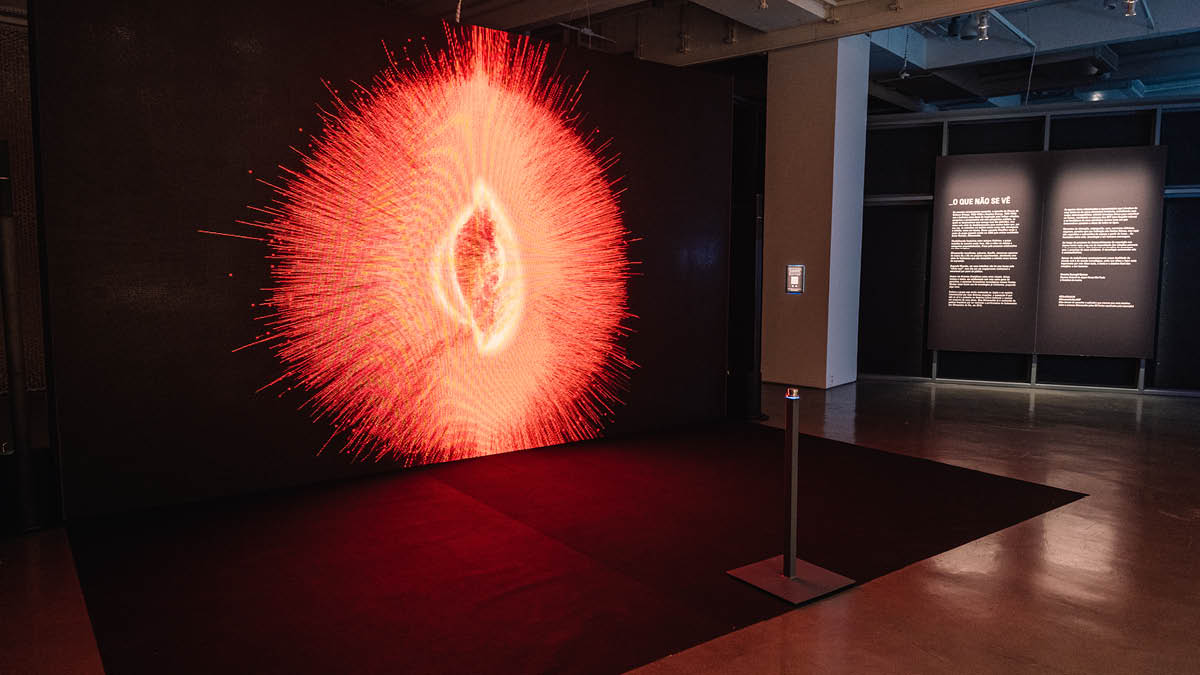
Additionally, images and sounds change in real time based on waves that are present in the place, including coming from smartphones. "With electromagnetic waves now an integral part of our infrastructure, this work draws our attention to a phenomenon that is often overlooked - the flow of an infinity of electromagnetic waves - while capturing the way we interact with them through our smartphones and cell phones", notes Daito Manabe.
Complex phenomena
Another project coming to Brazil for the first time is “optical walls”, an installation created by Rhizomatiks hardware engineer Youichi Sakamoto, in collaboration with Mitsui Chemicals. In this work, LED lights cross lenses arranged in a dark, misty room to create a space segmented by light. In this environment, the diffused LED light creates walls of light that float in the air or resemble doors opening in the darkness.
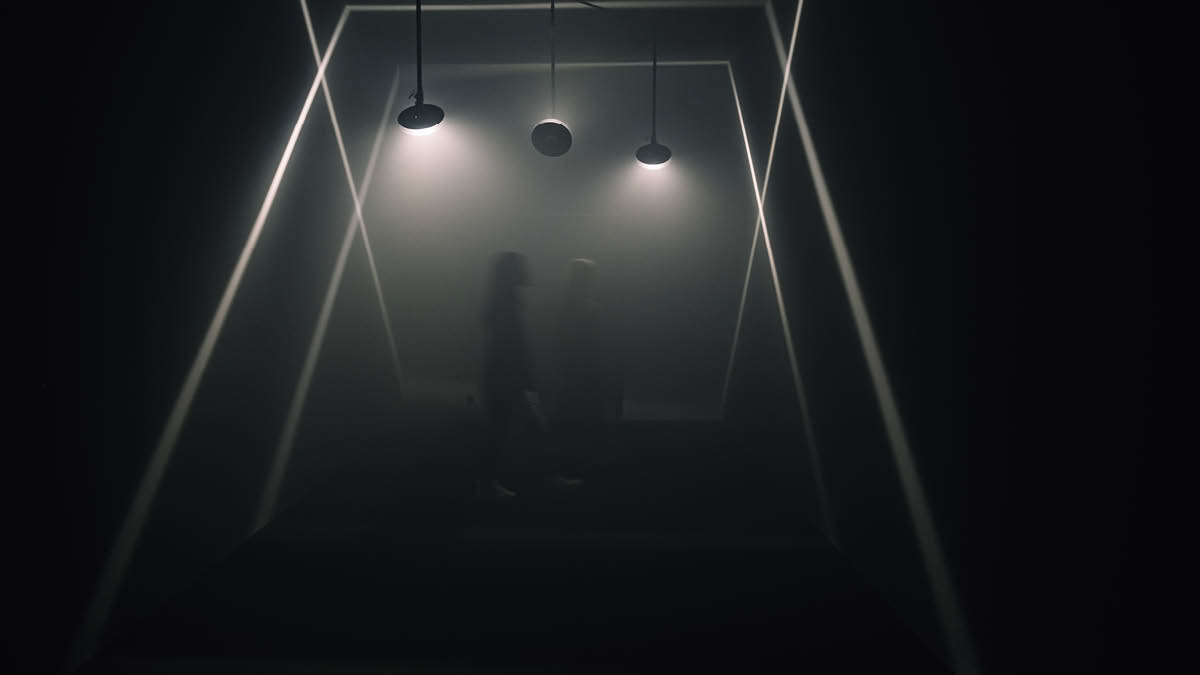
'optical walls' • Japan House São Paulo
Marina Melchers“In nature, the simplest tools produce surprisingly complex phenomena. For example, due to the Earth's fixed and tilted orbit around the Sun, there are seasons and mercurial changes in environmental conditions. This tilt of only 23.5 degrees is often overlooked in everyday life, but it produces an astonishing variation on this planet we call home. Our installation is all about deceptively simple principles like this. In fact, all it comprises is a handful of rotating light sources that exploit the role of diffusion on flat surfaces. Using fabricated materials, Optical Walls demonstrates the phenomenological laws of nature and a dazzling kaleidoscopic effect”, notes the engineer.
Digital universe and the “gold rush”
“What cannot be seen – Rhizomatiks” also brings the work “Gold Rush” – Visualization + Sonification of OpenSea activity, which focuses on the digital universe, especially on the movement of NFTs and of CryptoArt, and provokes a reflection on the challenges of the modern “gold rush”. The audiovisual work emerged from the collective’s numerous studies on its “CryptoArt Experiment” platform that Rhizomatiks developed as a market for the purchase of CryptoArt.
Right in the middle of this frontier dividing economy, technology, and art, Gold Rush documents the 24 hours before and after March 11, 2021, the date when the work "Everydays: The First 5000 Days", by American artist Beeple, was sold by the British auction house Christie's for $69,346,250.00 – a milestone in the history of NFTs and of art. Daito Manabe analyzed and made visible the commercial transaction data within OpenSea (NFT's trading platform) - during the day that the work was sold - as a way of reflecting on the aesthetics of NFT, which has rules, logic, and a structure that are totally different from those found on the physical art market.
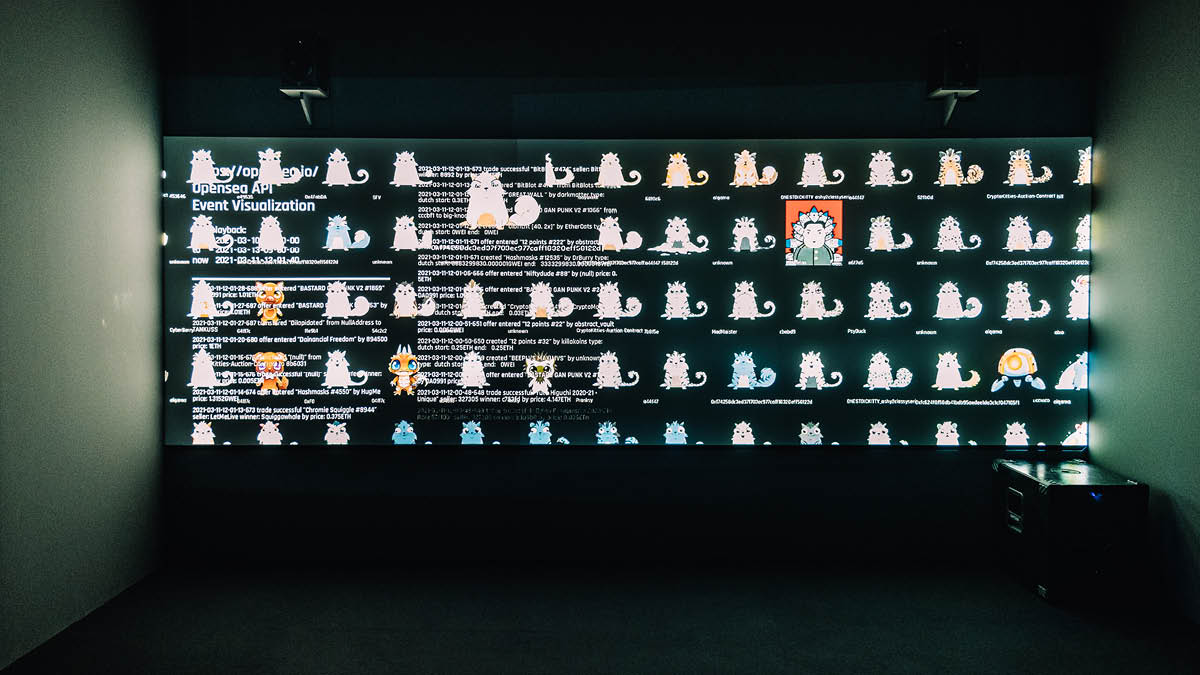
Natasha Barzaghi Geenen, cultural director and curator of the exhibition at Japan House São Paulo, said “the work not only draws attention to current topics such as NFTs, cryptocurrencies, and blockchains, but also illustrates the dynamism of virtual relationships and their many possibilities".
For those who are very curious, the Japan House São Paulo exhibition also has a section dedicated to a variety of collaborations, works, research records and their developments, and other projects that Rhizomatiks has created in Japan and around the world. Rhizomatiks Archive & Behind the Scenes presents a selection of devices the collective created between 2006 and 2021 that underlines the group’s inventiveness, both in the technological field and in the exploration and creation of hardware and devices, in addition to in the artistic field. Video recordings, original devices (like drones and other objects), and documentation provide a glimpse behind the scenes of the trial-and-error process that led to the unique production by the Japanese collective.
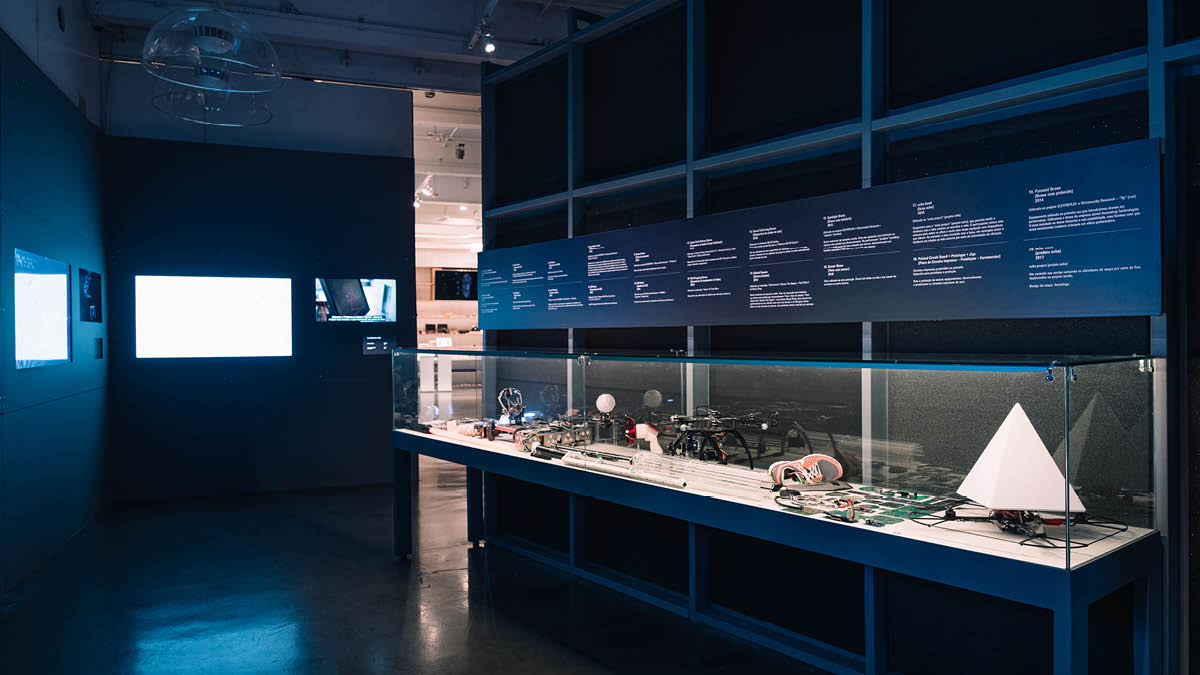
Rhizomatiks Archive & Behind the Scenes • Japan House São Paulo
Marina MelchersBetween the real and the virtual
“It was a long-held desire to bring a Rhizomatiks exhibition, with its experimental proposals, with its very current games between the real and the virtual, and with its innovative technology and expression possibilities. Four specific works were chosen so people could gain a better understanding of this artistic laboratory that moves freely between the virtual and the physical world, between the different fields of creation, and between the arts and entertainment", notes the exhibition's curator.
“For that, we also created a web app exclusive to this exhibition, which in addition to accessible content, will provide access to a micro universe on the works and other subjects that permeate the collective’s work, such as technology and science. The Japanese group's development process will be described through images, videos, and interviews with experts. In addition, there will be a playlist on Spotify with music Daito Manabe created himself exclusively for the exhibition at JHSP”, adds Natasha.
Accessible JHSP
Within the Accessible JHSP program, the exhibition “What cannot be seen – Rhizomatiks” features audio descriptions, sign language, and a bench with tactile elements.
About Rhizomatiks
Founded in 2006, Rhizomatiks explores the possibilities of new forms of expression and technology, presenting innovative works through projects focused on research and development, as well as collaborative works and projects together with other artists and researchers. Moving freely between the digital and physical worlds, its activities cover several areas, including art, media, advertising, entertainment, architecture, urban development and planning, and software and hardware operation.
Its best-known projects include its continuous collaboration with the Japanese musical groups ELEVENPLAY and Perfume, as well as the live performance that combined virtual reality with computer graphics, presented at the closing of the Rio 2016 Olympic Games, in Rio de Janeiro.
Service:
Exhibition "What cannot be seen - Rhizomatiks"
Period: July 12 to October 2, 2022
Cost: free admission
The exhibition has accessibility features.
Advance online reservations are optional, but recommended: https://agendamento.japanhousesp.com.br
Japan House São Paulo
Address: Avenida Paulista, 52 – Bela Vista, São Paulo
Opening hours:
Tuesday to Friday:10 am to 6 pm
Saturdays: 9 am to 7 pm
Sundays, and banking holidays: 9 am to 6 pm
Japan House São Paulo remains closed on Mondays, without exception, including on holidays.




